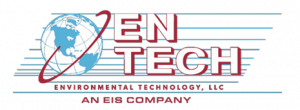Environmental Technology, LLC (EN TECH) provides our clients with quality site remediations that are timely and cost-effective. Our staff of geologists and engineers work closely together to design effective remediation systems that address site-specific conditions and regulatory compliance objectives.
Contaminant Plume Analysis and Data Interpretation
The key to effective site remediation lies in a quality site characterization identifying the vertical and lateral extent of soil contamination and the degree and extent of groundwater impact. This information can be used for mass-balance calculations for contained contaminants and provides the basis of the remedial action. The characterization data guides the design of feasibility testing and contaminant migration analysis necessary for choosing appropriate remedial actions. In addition, risk assessment analyses provide information in the development of cleanup criteria and evaluating response to threats of sensitive receptors, such as drinking water wells.
Feasibility Testing
Once the parameters of the contaminant plume have been defined and sensitive receptors have been identified, feasibility testing should be performed to develop an understanding of the soil and/or groundwater characteristics. Data can be developed on the response of contaminant vapors, groundwater flow or bacterial action by applying perturbations to the subsurface soils and groundwater aquifer. The data collected during feasibility testing can be used in modeling contaminant response to applied remedial systems. This allows the remediation engineer to evaluate remedial scenarios and perform cost-benefit analyses in choosing appropriate action.
Cost-Benefit Analysis
This cost-benefit analysis incorporates the appropriate remedial actions evaluated through feasibility testing with the client’s goals and timeframe and the regulatory compliance objectives to arrive at the most cost-effective and least burdensome remedial action for the client.
Development of Corrective Action Plans and Remedial Design
EN TECH’s staff has extensive experience in corrective action planning and remedial design. A variety of techniques are available for contaminant remediation.
The corrective action plan (CAP) evaluates the technically available actions, their feasibility for the contaminants of concern, contaminant concentrations and site-specific factors to select appropriate and applicable actions. This is followed by a cost-benefit analysis incorporating the relative costs of each selected action to the site objectives of the client’s timeframe and budget and the regulatory requirements to arrive at an action of choice. The chosen action is developed into a conceptual design for site-specific conditions.
The CAP is submitted to ADEQ for review and approval. Once approved the CAP is implemented by preparing a detailed system design specification. The specification is sent for bids from system vendors and remedial construction contractors.
